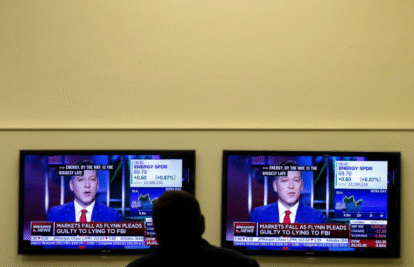Introduction
In the age of instant information, news plays a crucial role in shaping public opinion, political outcomes, and even individual decisions. However, have you ever wondered how media outlets choose what stories to report and which ones to leave out? With the immense flow of information available every second, the process of selecting news stories is far from simple. It involves numerous factors, from editorial guidelines to the pursuit of audience engagement. In this article, we’ll break down the process of how media outlets decide what to report, examine the factors influencing news selection, and understand the impact this process has on public perception and trust in the media.
1. The Role of Editorial Guidelines in News Selection
What Are Editorial Guidelines?
Editorial guidelines are the rules and principles that media organizations use to decide what content should be covered, how it should be framed, and what style should be employed. These guidelines are shaped by the media outlet’s mission, target audience, and overall vision. Some organizations lean towards more objective reporting, while others may have a particular slant or agenda, affecting the type of news they choose to cover.
Key Components of Editorial Guidelines
- Accuracy: Ensuring that the news reported is fact-checked and truthful.
- Relevance: Prioritizing stories that are important to the target audience.
- Balance: Presenting multiple sides of a story when possible.
- Ethical Reporting: Following ethical standards to avoid harm, bias, or misinformation.
See also: The Evolution of News Consumption: How Technology is Shaping the Way We Stay Informed
2. The Impact of Audience Demographics
Understanding Your Audience
Media outlets are not just reporting for the general public; they often cater to a specific demographic. Whether it’s a local newspaper or a global news network, understanding the audience’s interests, preferences, and values is essential for news selection. For instance, a news outlet targeting young adults may focus more on social media trends, entertainment, and youth-related issues, while a conservative media outlet may emphasize topics like economics, politics, and national security.
How Audience Demographics Shape Content
- Political Leanings: Media outlets may adjust their coverage to align with the political preferences of their audience.
- Cultural Sensitivity: News outlets might choose stories that resonate with the cultural background of their audience, omitting content that may alienate them.
- Age and Lifestyle: Different age groups demand different kinds of news. For example, health-related topics might dominate media targeting older demographics.
3. Commercial Interests and Advertiser Influence
The Business Side of News
News organizations are businesses that rely on advertising revenue. Therefore, commercial interests often play a role in determining the kinds of stories that receive attention. Stories that attract higher viewership or engagement tend to be prioritized, as this drives ad sales.
Advertisers’ Influence
- Sensitive Topics: Certain stories, especially those dealing with controversial issues, might be avoided to prevent alienating potential advertisers.
- Product Placement: Some media outlets may feature stories related to the brands or products they are advertising, subtly influencing content.
4. The Impact of Breaking News and Urgency
Timeliness and the Need for Speed
In today’s 24/7 news cycle, speed is crucial. When breaking news occurs, media outlets must make swift decisions about what to cover. This often means that the first reports may lack context or thorough fact-checking, as outlets race to get the story out before competitors.
Breaking News Decisions
- Event Magnitude: Major events like natural disasters, terrorist attacks, or political upheavals are often covered immediately due to their urgency.
- Social Media Influence: Social media platforms now play a significant role in spreading breaking news. Newsrooms often monitor social media for trending stories, influencing their editorial decisions.
5. The Power of News Frames and Storytelling
What Is a News Frame?
A news frame is how a story is presented to the audience. Media outlets can shape the public’s perception of an event or issue by framing it in a particular way. For example, a protest can be framed as a “peaceful demonstration” or as a “violent riot,” depending on how the media outlet chooses to present it.
Types of Frames in News Reporting
- Conflict Frame: Emphasizes tensions, conflicts, and opposing viewpoints.
- Human Interest Frame: Focuses on the personal stories of individuals involved in the news.
- Economic Frame: Highlights the financial or economic implications of a story.
The Role of Storytelling in News
Effective storytelling can make or break a news report. Media outlets often choose stories that they can tell in a compelling, relatable, and engaging manner, keeping the audience hooked and increasing the likelihood of them returning for more updates.
6. Journalistic Objectivity vs. Bias
Balancing Objectivity and Bias
While many media outlets strive to report objectively, bias inevitably creeps into news selection. This bias might be conscious or unconscious, and it often manifests in the types of stories chosen, how those stories are framed, and what context is provided.
The Challenges of Maintaining Objectivity
- Personal Biases: Journalists, like all individuals, bring their personal biases to their work. These biases can affect what stories they choose to cover and how they report them.
- Corporate Biases: The ownership and corporate structure of a media outlet can influence its editorial decisions, particularly if the outlet has political or commercial interests.
7. The Role of Technology and Automation in News Selection
Artificial Intelligence and Algorithmic Selection
Technology is increasingly being used in the news industry to help media outlets decide what to report. Algorithms can analyze vast amounts of data to identify trending topics, audience preferences, and breaking news events. These technologies help streamline the decision-making process but also raise concerns about over-reliance on automation.
AI-Driven Newsrooms
- Automated Content Creation: Some news outlets use AI to generate basic news reports, especially for simple stories like sports scores or financial updates.
- Algorithmic Bias: The algorithms used to curate news are influenced by data, and they can perpetuate bias by selecting stories that align with existing trends or user interests.
8. The Role of Ethics in News Selection
Ethical Reporting Practices
The media industry is held to certain ethical standards to ensure responsible and truthful reporting. These standards affect how stories are chosen, with news outlets prioritizing stories that adhere to ethical practices. For example, reporting on vulnerable populations requires sensitivity and care to avoid harm or exploitation.
Ethical Dilemmas in News Reporting
- Privacy Concerns: Stories involving private individuals or sensitive information raise ethical dilemmas about what should be reported and what should be kept private.
- Sensationalism: The drive for high ratings or click-throughs can sometimes lead to the sensationalization of stories, distorting the truth for entertainment or shock value.
9. The Influence of Media Ownership on News Selection
Concentration of Media Ownership
The ownership of media outlets can play a significant role in the selection of news stories. When a small number of corporations own the majority of media outlets, there is the potential for the news to reflect the interests of these corporations, rather than a diverse range of voices.
Corporate Control of News
- Monopoly on News: Large media conglomerates often control what is presented to the public, which can limit diversity in news coverage.
- Corporate Agenda: The interests of large corporations may affect how certain stories are covered, especially those involving issues like corporate regulation or environmental concerns.
10. The Role of Investigative Journalism
What is Investigative Journalism?
Investigative journalism is a form of journalism that seeks to uncover hidden truths, expose corruption, and hold those in power accountable. While it’s a critical part of the news industry, investigative stories are often resource-intensive and may take a backseat to quicker, more commercially viable news items.
The Importance of Investigative Reporting
- Uncovering the Truth: Investigative journalists often report on issues that are not immediately visible to the public, such as government corruption, corporate malfeasance, or societal injustice.
- Challenges in Investigative Journalism: Investigative stories can be expensive and time-consuming to produce, making them less frequent than other types of news coverage.
11. Conclusion
Media outlets are responsible for deciding what stories are reported, shaping public perception of events, and influencing societal values. From editorial guidelines to audience preferences, commercial interests, and ethical considerations, the process of news selection is influenced by a complex set of factors. Understanding these dynamics is essential for critically consuming the news and recognizing the factors at play in shaping the stories we read and watch.
Frequently Asked Questions (FAQs)
1. How do media outlets decide what stories are newsworthy?
Media outlets rely on editorial guidelines, audience preferences, and the relevance of an event to decide which stories to cover. They prioritize accuracy, timeliness, and engagement.
2. Can media bias affect news selection?
Yes, media bias can influence which stories are selected and how they are presented. This can be based on the outlet’s political leaning or the biases of individual journalists.
3. How does social media impact news selection?
Social media platforms serve as a real-time source of trending topics, and media outlets often turn to social media to identify stories that are gaining traction.
4. What is the role of advertising in news selection?
Advertisers have a significant influence on news selection, as media outlets may avoid certain topics that could harm advertiser relationships or prioritize stories that boost engagement.
5. Is investigative journalism still important?
Yes, investigative journalism plays a crucial role in uncovering hidden truths, exposing corruption, and holding institutions accountable. However, it is more resource-intensive and less frequent than other forms of news reporting.
6. How do news organizations balance speed with accuracy in breaking news?
In breaking news situations, media outlets must prioritize speed but often face the challenge of verifying facts and ensuring the accuracy of their reports before releasing them.




 News in the Digital Age: How Social Media Platforms are Changing Journalism
News in the Digital Age: How Social Media Platforms are Changing Journalism